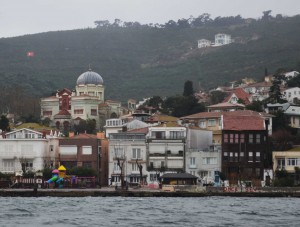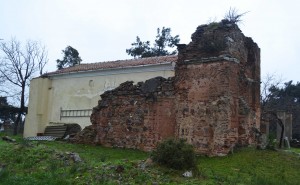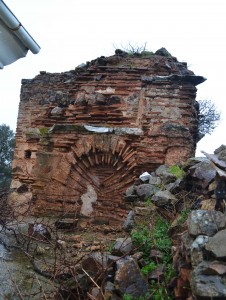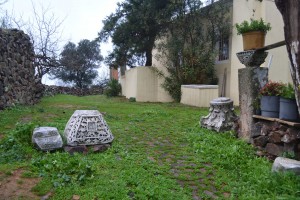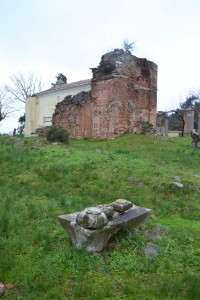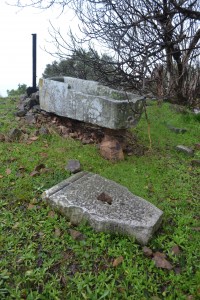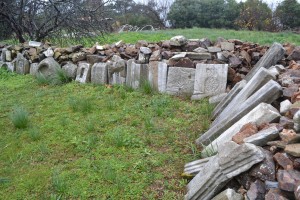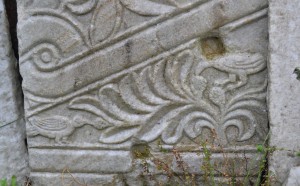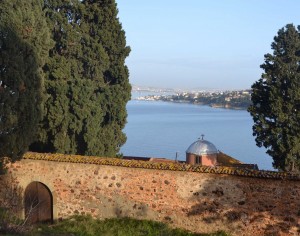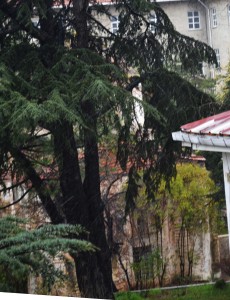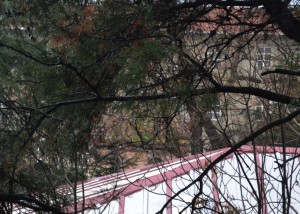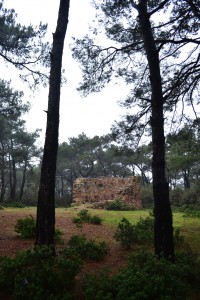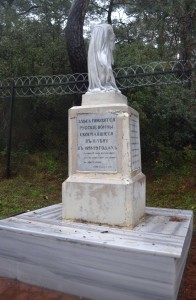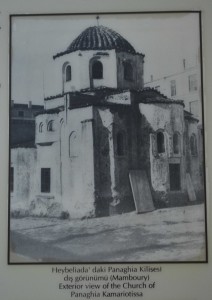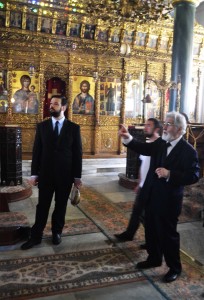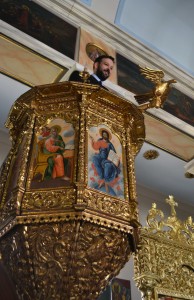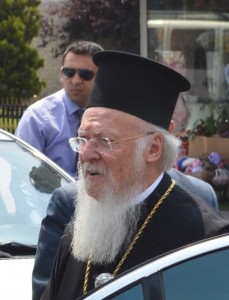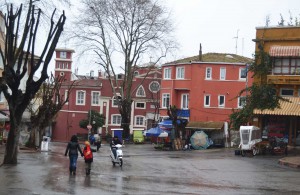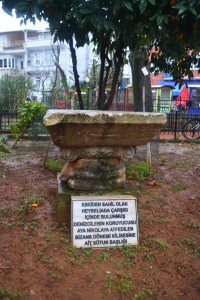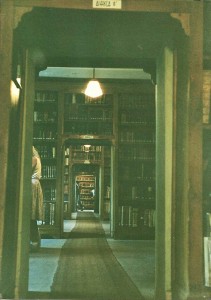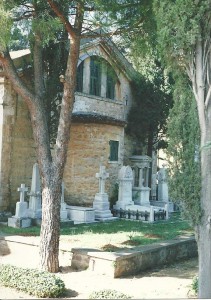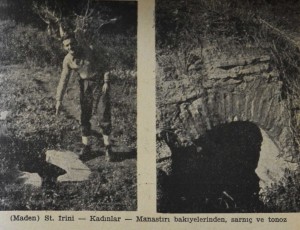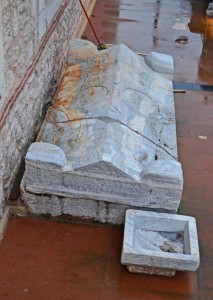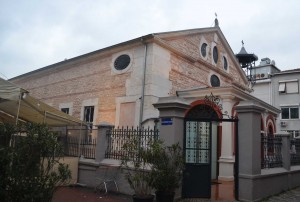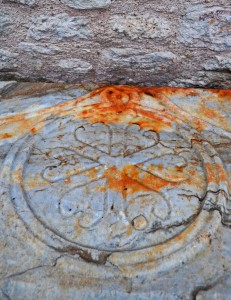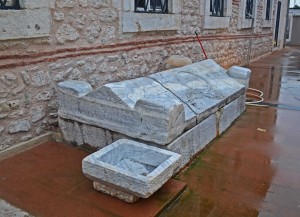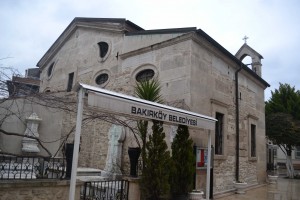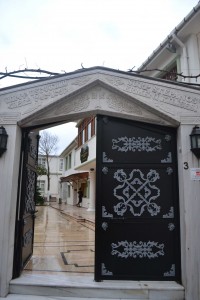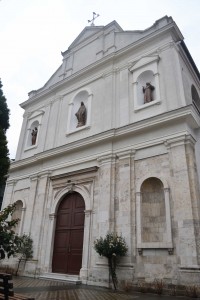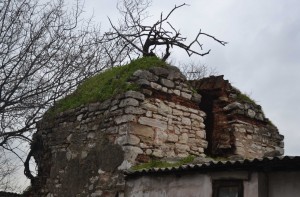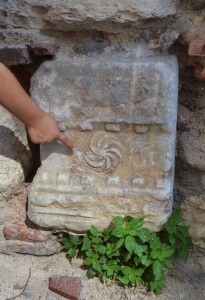The town of Burgaz is dominated by the massive Church of Aya Yani or the Church of Agios Ioannis Prodromos (John the Baptist). It is built on the foundations of a Byzantine church with extensive vaults beneath. These included the dungeon in which Methodius is said to have been imprisoned for seven years by Emperor Michael II for worship of icons. Happily for Methodius, the Emperor Michael died and was replaced by Theophilus, every bit as iconoclastic as his predecessor, but with a significantly rosier opinion of the dungeon-dweller. Methodius was allowed to resume his position of importance in the church. On the fall of iconoclasm, he became Patriarch.
The current church rose in its domed magnificence in 1896 and remains the most impressive religious building on Burgaz, being far bigger than the island’s single mosque which was not built until 1953.
The highest hill on Burgaz is Bayraktepe, renamed from Isa Tepe (Christ hill) in Republican times. On the top is a crumbling house with the best view in the islands. This is where the caretaker of the Monastery of the Transfiguration (Burgazada Metamorfosis Hristos Manastırı) lives. There is a 19th century Church of Christ standing in the ruins of the 9th century monastery.

Posted February 18, 2015 Posted by Adam in Uncategorized
Heybeliada, the Greek Halki, was active in Byzantine Christian circles. According to Mamboury, all of the hills were once crowned with monasteries. There are several monasteries today but the only real Byzantine church is stranded in strictly secular isolation.
In the centre of Heybeliada is a mysterious, intact Byzantine church from immediately before the Turkish conquest, the Church of Panaghia Kamariotissa (40.875371,29.086926). It was probably the last church to be built in Constantinople before the fall in 1453 and it looks similar to how St Mary of the Mongols might have been before all the alterations. It is in the middle of the Deniz Lisesi (what used to be the Orthodox orphanage for girls). Here’s a picture from 1937. A picture by Nicholas Artamonoff shows the interior in 1938. It was once the Katholikon of the Monastery of St John the Baptist which was probably founded in the 8th or 9th century.
The church is hard to see. The Deniz Lise is a military zone and resists invasion attempts by civilians like me. The best I can do is peer over the wall. Winter is the best time, when the deciduous trees lose their leaves. The conifers still hide most of it. These pictures were taken on a sleety day in January 2015.
There is an odd little cemetery to the west of the Naval School. In 1828, in the last years of the operation of the monastery, Russian prisoners from the Russo-Turkish war were kept here. Three hundred died and the three monuments here commemorate them. The central one has a now-headless angel and the tsar’s double-headed eagle, coincidentally the same emblem of the Palaeologus dynasty that had the Church of the Panaghia Kamariotissa built. After the war, the site was reopened in 1831 as a Greek business school. World War I saw the buildings requisitioned for military use then, after the Republican victory, they were used to house orphans of Greek parents who died in the euphemistically named population exchange of 1923. In 1942, the official texts say, the Orthodox priests ‘voluntarily abandoned’ the Kamariotissa. This strategic move enabled them to stay alive and to transfer the iconostasis to Aya Triada, at the time operating as the Theological School.
The site of the Kamariotissa is dominated by Değirmen Tepe. I climbed this hill in the hope of finding remains of the monastery mentioned by Mamboury. I should not have been surprised to find an Ottoman windmill. It was probably built with stones reused from the monastery ruins.
Heybeliada also has Aya Triada Monastery and the Theological School of the Patriarchate, closed by the government in 1970. This is on the loveliest site in the islands (40.88229,29.094973) and some bits of Byzantium can still be seen. I was taken there by a Turkish naval officer in 1990. The library was amazing, full of works by Archimedes and Anaximander, copies from after their lifetimes but still ancient.
The Church of Aya Nikola just above the ferry quay appears to have been built on the foundations of a Byzantine church also dedicated to Saint Nicholas.

Posted February 18, 2015 Posted by Adam in Uncategorized
Büyükada has two monasteries but any links with a Byzantine history seem to be unknown or non-existent. There are supposed to be some bits of a monastery to St Irene remaining in the area of the island called Maden, the most substantial remains being those of the cistern. I haven’t found these yet but here is a picture from the 1950s.

Posted February 18, 2015 Posted by Adam in Uncategorized
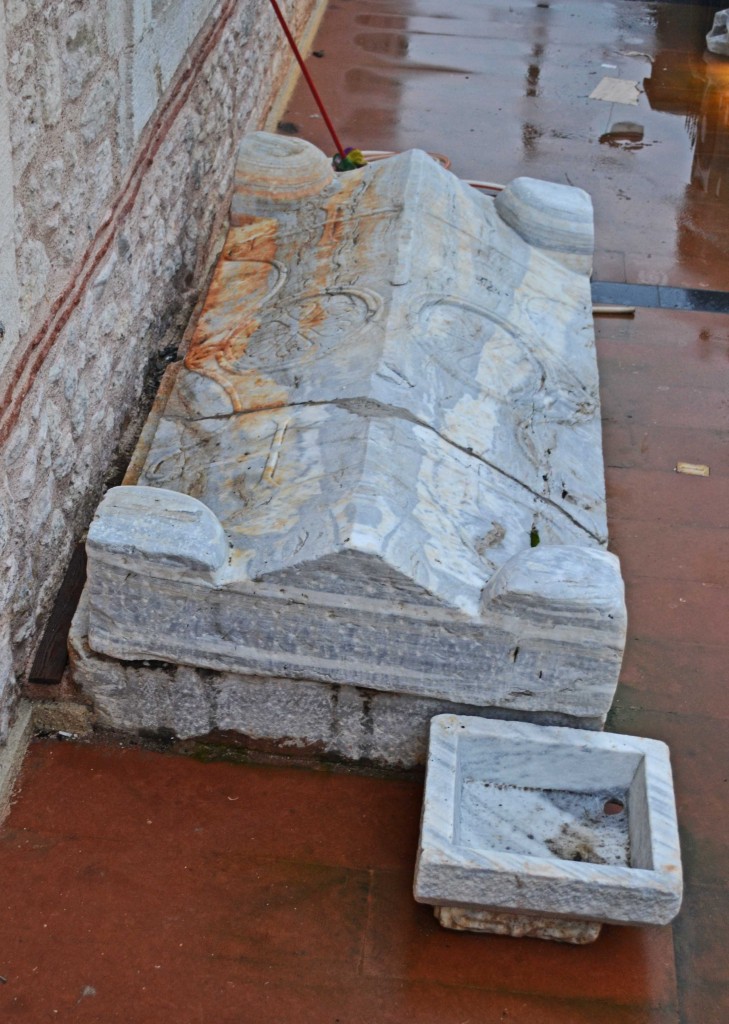

Posted February 17, 2015 Posted by Adam in Uncategorized
Yeşilköy is different from the rest of Istanbul. There is a port with three churches nestled around it, all named after St Stephen. Tuna and Şeker (1999) relate the story of a ship carrying relics of St Stephen being caught in a storm as it set sail from Constantinople. It put into a nearby port on the Marmara shore and the saint’s bones were taken to a church for safekeeping. Thereafter, the church went by the name of St Stephen.
The current Orthodox church of Agios Stefanos (40.957019, 28.821339) is reputed to be built on site of the Byzantine church in which the remains of St Stephen sheltered from the tempest. It is a well-kept stone building with an ornate late 5th or early 6th century Byzantine sarcophagus embedded in the ground on its eastern side. A persistent rumour links it to the hypogeum in Bakırköy. It is a beautiful piece of marble stonework, in temple form with crosses and laurels. An impost capital of the Ionic order sits on the ground beside the sarcophagus, looking a little like a bird bath.
Within 30 metres of Agios Stefanos are the Armenian church of Surp Stepanos (40.956967, 28.820757) and the immense Latin Catholic complex of Ayastefanos or St Etienne (40.957709, 28.821756). Both of these seem to be the centres of flourishing communities. The churches of Yeşilköy are not hidden behind defensive walls. Happily, they are confidently open to visitors.
The village of Ayastefanos has several other claims to fame. In 1203, the invading fleet of the Fourth Crusade landed here prior to launching their assault on Constantinople. Geoffrey de Villehardouin, a chronicler with the Latin forces, recorded the event thus:
All started from the port of Abydos together. Then might you have seen the Straits of St. George (as it were) in flower with ships and galleys sailing upwards, and the beauty thereof was a great marvel to behold. Thus they sailed up the Straits of St. George till they came, on St. John the Baptist’s Eve, in June (23rd June 1203) to St. Stephen, an abbey that lay three leagues from Constantinople. There had those on board the ships and galleys and transports full sight of Constantinople; and they took port and anchored their vessels.
De Villehardouin, G (c1213) Memoirs or Chronicle of the Fourth Crusade and the Conquest of Constantinople. http://www.gutenberg.org/dirs/etext04/mctfc10h.htm
A short distance to the east of the churches is a piece of ecclesiastical Byzantine marble embedded in an Ottoman wall. This might conceivably have come from the Byzantine abbey referred to by de Villehardouin.
Ayastefanos also appears to be the location of the earliest surviving Turkish film, a documentary recording the destruction of the Russian memorial to the fallen in the 1877-78 war between Russia and the remnants of the Ottoman Empire. The Turkish army demolished the provocatively situated monument in 1914. Ayastefanos was renamed Yeşilköy in 1926 as part of the Republican fervour for eradicating non-Turkish names.

« Previous Entries Next Entries »
